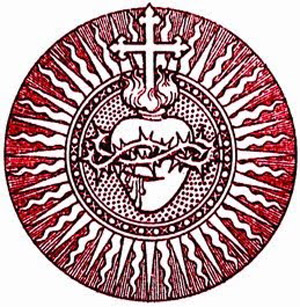The Sacred Heart and Political Order
June 27, 2014
FOR those who practice the Devotion to the Sacred Heart of Jesus, Gabriel Garcia Moreno holds a special place in history.
Moreno was elected three times to the presidency of Ecuador, the last time in 1875. When Moreno consecrated that small nation to the Sacred Heart, he acted in keeping with the famous revelations of St. Margaret Mary Alacoque, a French nun of the 17th century who said that Christ appeared to her and instructed kings and nations, as well as individuals, to adore his heart and receive an outpouring of graces. Moreno sealed his fate as well. For with that event, it is believed, Freemasons resolved once and for all to assassinate him.
Devotees of the Sacred Heart traditionally go to Mass and receive Communion on the First Friday of the month. On the first Friday of August, 1875, after Mass, work on his inauguration address, and a final visit to the Blessed Sacrament, Moreno walked to the Presidential Palace. According to Marian Horvat’s account:
At the steps of the Presidential Palace he greeted several persons, including Faustino Rayo, who would shortly strike the first brutal machete blow. Rayo, who held a grudge against Moreno for dismissing him from a lucrative office because of his dishonest practices, had taken up leatherwork. He pretended, however, to be on friendly terms with the President, who had recently contracted him to make a saddle for his young son (his only living child), Gabriel García del Alcázar.
He climbed the side stairs to the porch with its thick colonial pillars. At that time there were no railings between the columns, as we see today. In fact, the scrolled black grills came from the famous Tuilleries Palace in Paris, torn down by the revolutionaries and ordered by Garcia Moreno himself for Ecuador’s Palace. They would only arrive and be installed, however, after his death.
He was approaching the Treasury Department’s entrance into the Palace. There, Rayo rushed forward and attacked him with a machete. The first blow struck his hat, which flew off his head and landed in the plaza below. Rayo delivered more blows, and his fellow conspirators took position and fired their guns. Their bullets only grazed him.
Afterward, the infamous cry of Rayo, “Die, tyrant!”
And the beautiful response of Garcia Moreno, staggering from the wounds, “Dios no muere!” “God does not die.” These were the last words of a line he had often repeated, “I am only a man who can be killed and replaced, but God does not die.”
Another shout came from Rayo and fellow assassin Roberto Andrade, “Die, Jesuit!” It was a way to say “Die, lover of Jesuits,” an Order that had been expelled by the anticlerical regime that preceded Moreno’s first presidency. One of his early acts in 1860 had been to invite the Jesuits back and to return their buildings.
Moreno had been warned of the assassination plots but had refused to flee. Today, on the Feast Day of the Sacred Heart, it is worthwhile to recall the ideal Moreno espoused. The political and spiritual are related and the radical divorce of Church and State is evil. This is, of course, a foreign and obnoxious idea, indeed rank heresy, to most people today. As Solange Hertz wrote: “True devotion to the Sacred Heart of Jesus has rarely, if ever, been preached in the United States. It is too embarrassingly political.”
Hertz continued in her book The Star-Spangled Heresy: Americanism:
For two hundred years the false principles that Church and state must be separate, that all men are created equal, and that authority comes from below have been imposed as a matter of public policy. It is therefore understandable that Catholics not prepared to “suffer under Pontius Pilate” have kept this flammable devotion to the Heart of God within the jug of personal piety, with little social extension beyond the family. Lest our Lord be deported as a subversive, He has been portrayed only as a yearning, all-forgiving – if not simpering – Savior desiring to clasp indiscriminately to His blazing breast any and every individual without the slightest concern for his politics.
The Lord who appeared to St. Margaret Mary and declared that He wished to be honored in the house of the King of France is dwelt upon mostly by specialists in mysticism. Few Americans have even heard of the vision subsequently accorded to St. Catherine Labouré, of Christ the King in anguish, despoiled of His royal insignia; nor do they know that she was told concerning the destruction of the French monarchy, “Little do you know what you have lost!” Yet the consequences of the French Revolution are clear in the world today.
As Plinio Corrêa de Oliveira wrote:
[I]f we want to perceive how the Revolution and Counter-Revolution are working around us and in us, if we want to know our defects, to understand the souls of others to do good for them, to have keen insight in our studies, to have a good psychological equilibrium and be cured of nervous problems of all types, then we can and we must have recourse to the Sacred Heart of Jesus.
The Sacred Heart is indispensable to the Counter-Revolution, within the world at large and ourselves as well.



